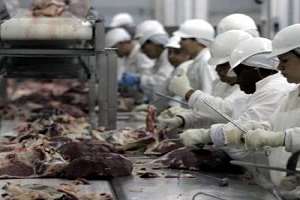Almost a month into 2017 now, the industry is starting to get a sense of how cattle markets are going to perform here in the first quarter of the year. Radio Oklahoma Ag Network Farm Director Ron Hays caught up with Oklahoma State University Cattle Market Economist Dr. Derrell Peel, to get his thoughts on what he sees happening in the markets thus far. He contends that it all depends on how you look at demand.

“Are we going to see lower retail prices for beef in 2017? Absolutely,” Peel stated. “Because there’s going to be more beef in the market and it will take lower prices to move that meat through the market.”
Peel says that in and of itself is not an indication of weaker demand, but at the same time he says per capita consumption will be up in 2017 - also not an indicator for strong demand.
“It’s the combination of the two that’s really important here and what we’ve seen so far is that we’ve been able to move significant quantities of beef again,” Peel explained, “especially in the 4th quarter of 2016.”
And while retail prices are adjusting down in response to the increase in supplies, Peel asserts that considering the amount of pork and poultry on the market, domestic beef demand is holding very strong, currently.
Click here to see more...